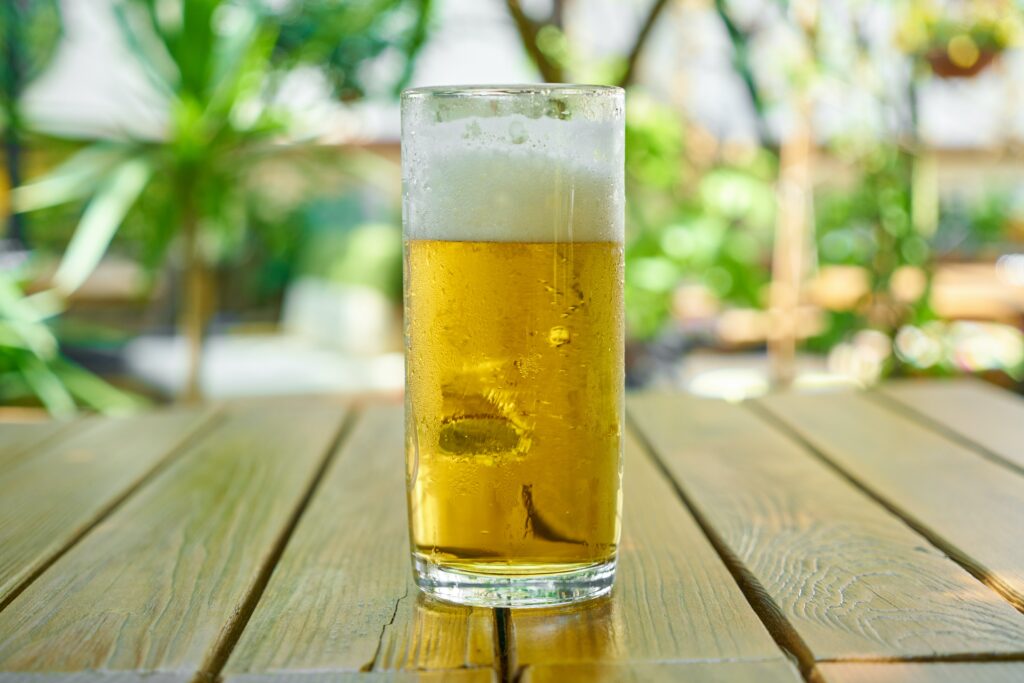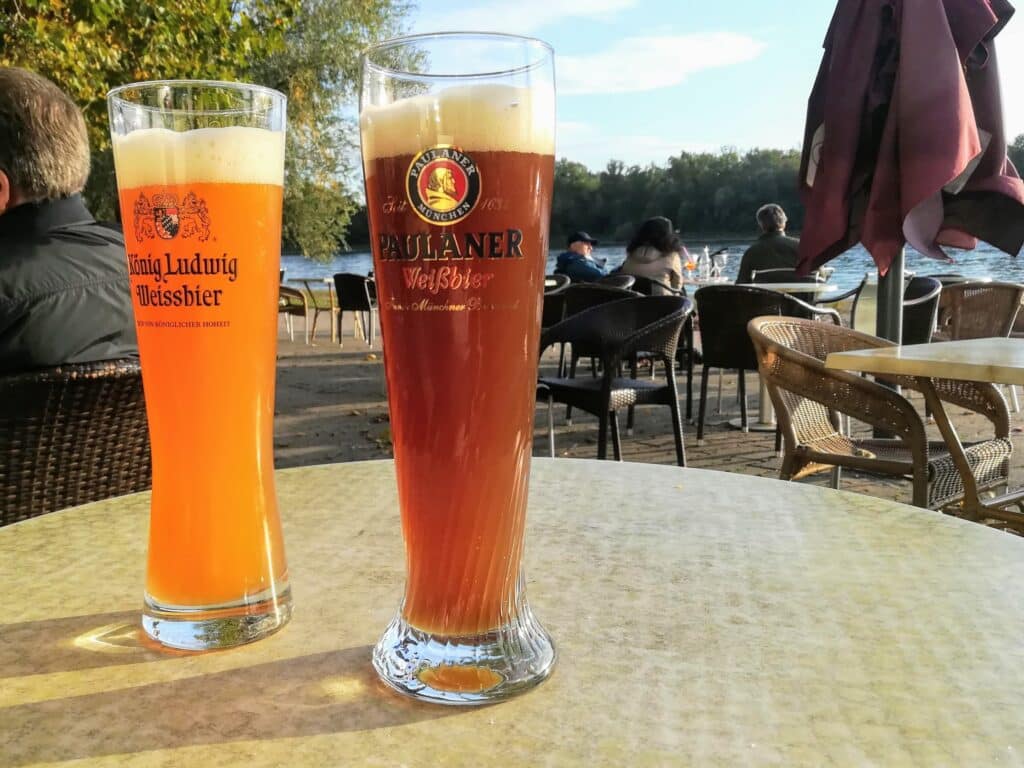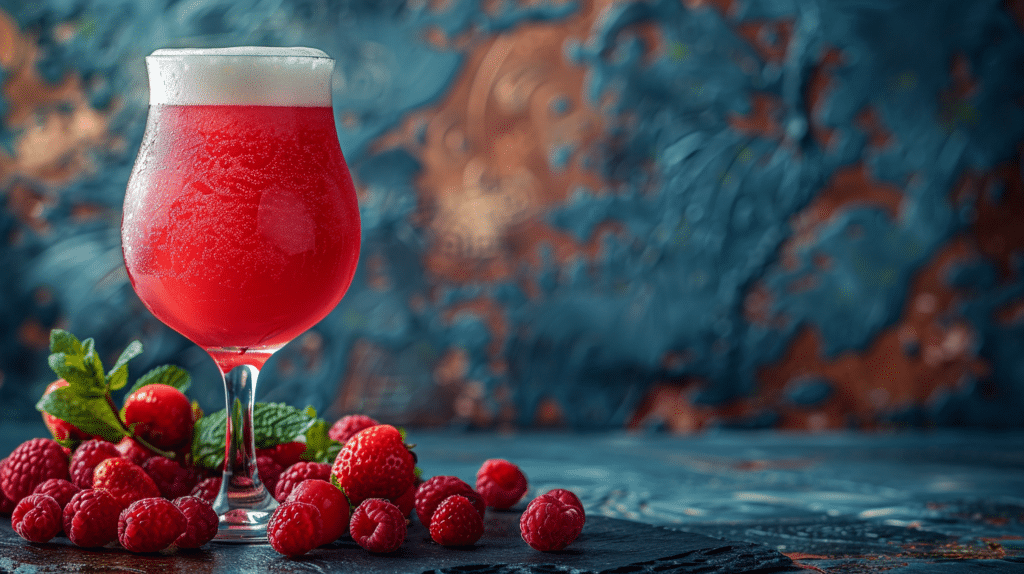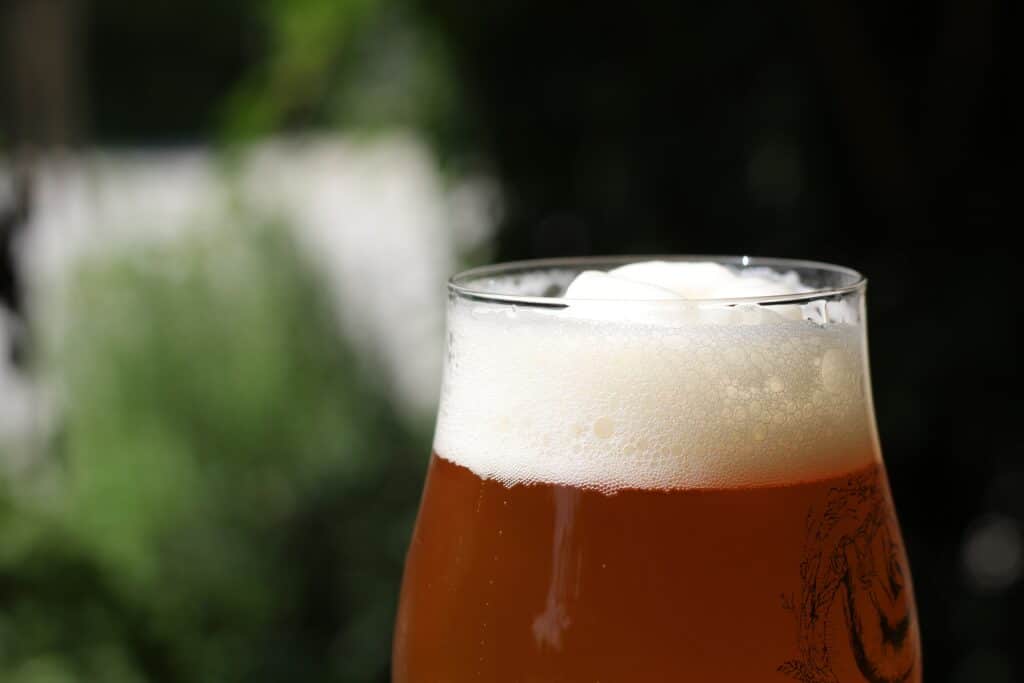Disclaimer: This post may contain affiliate links, from which I may earn a small commission at no extra cost to you. Thank you for supporting Ale Affair.
Ah, lager. The gloriously crisp and refreshing beer drunk by academics and skinheads alike. But what’s a lager? What does lager taste like? What is its story, and why is it just so damn popular? Well, that’s my job today – to bring you on a long lager-y adventure, exploring the history of lager, its brewing process, and taste profile. I’ll even share some of the best lagers to try! So, what are you waiting for? Hop on the Lager Express – next stop, Central Europe.
What’s a Lager? A Brief Overview
Lager is one of the two main types of beer, the other being ale. If you’re screaming “What about stouts” at your screen, stouts are an ale, my friend. The key difference between lagers and ales lies in the fermentation process and the types of yeast used. We’ll get to that later.
Origin and History
Lager is a beer with roots in Central Europe, particularly Germany and the Czech Republic. The term “lager” is derived from the German word “lagern,” which means “to store.” This refers to the traditional method of storing beer in cool caves or cellars for ageing or lagering.
The practice of lagering beer dates back to the Middle Ages when brewers in Bavaria and Bohemia began storing their beer in caves to keep it cool during summer. The cold temperatures allowed the beer to mature slowly and develop a smoother, more refined flavour.
However, it wasn’t until the 19th century that the understanding of lager yeast for controlled fermentation became more widespread. This was due to the work of brewers such as Louis Pasteur and Emil Hansen, who isolated and identified the specific strains of yeast used in lager brewing. Lager is now a global superstar—like Taylor Swift!
Global Popularity
Everyone loves a lager. It’s the most widely consumed type of beer worldwide, and its refreshing and approachable taste profile makes it particularly popular in various settings and climates.
The global lager market is expected to reach a valuation of US$380.73 billion by the end of 2023, accelerating at a Compound Annual Growth Rate (CAGR) of 3.1% during the forecast period (2023 to 2033). Lager sales are likely to account for 55% of the global beer market demand, valued at US$512.26 billion in 2033.
Also, interestingly, in the UK, lager makes up 6 of the top 10 favourite beer brands, with Budweiser being the most popular lager (let me grab my shame bell).
Serving and Consumption
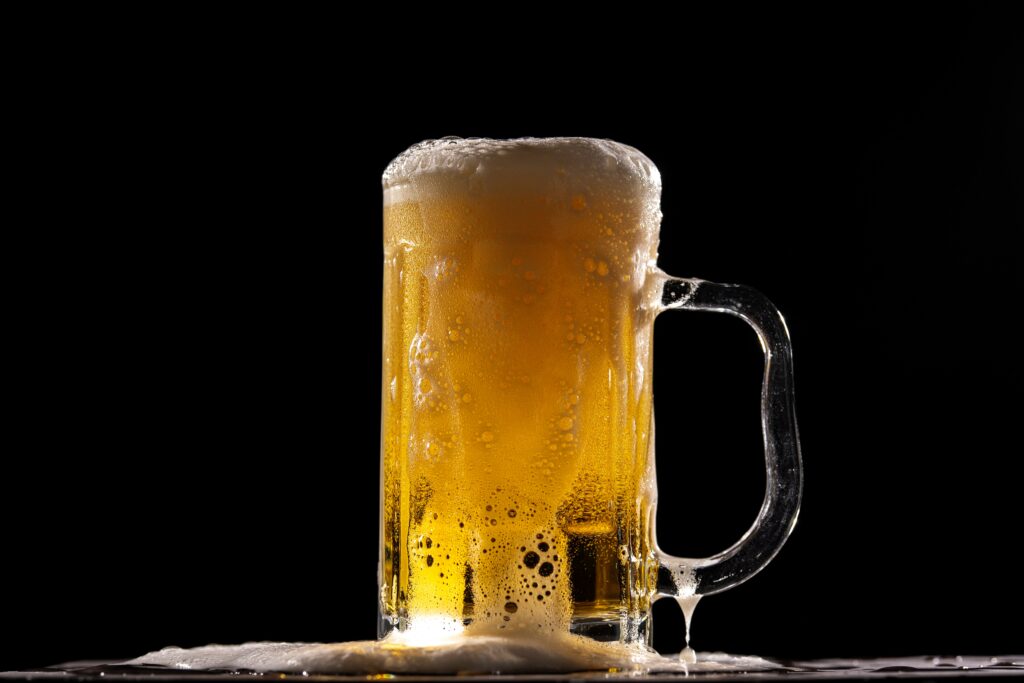
Glassware: Lagers are typically served in pint glasses. If you ask for an Amstel in London (although I don’t know why you would), you will receive it in a pint glass. Of course, it does depend on the specific style, ranging from Pilsner glasses to steins or mugs for heavy-duty drinking.
Temperature: No, Germans do not drink their beers warm. Instead, lagers are best enjoyed at slightly chilled temperatures, though the exact preference can vary based on the style. Lighter lagers are often served colder, while more robust styles like bocks and dunkels may be served slightly warmer to enhance their flavours.
The Lager Lowdown: How is Lager Made?
Lager is brewed with bottom-fermenting yeast at lower temperatures, which gives it a crisp taste. After fermentation, it is conditioned for weeks to months at near-freezing temperatures to enhance flavours and achieve a smooth finish. Let’s look at each step to create a lager as we know it!
Milling
The first step is milling malted barley to break it down into smaller pieces, which helps to extract fermentable sugars. This milling process is crucial and ensures that the barley is easier to work with.
Mashing
The next step is mashing. The milled grains are mixed with hot water in a process called mashing. This allows the enzymes in the malt to break down the starch in the grain into sugars, producing a sugary liquid known as wort. The temperature and timing of the mashing process are crucial, as they help to ensure that the enzymes have enough time to break down the starch into sugars.
Lautering
After mashing, the wort is separated from the spent grains in a lautering process. This step involves draining the wort from the grains and leaving behind the spent grains. The result is a clear liquid wort that is ready for boiling.
Boiling
The wort is then boiled, and hops are added for flavour, bitterness, and aroma. The boiling process also sterilises the wort, ensuring it is free from harmful bacteria. The duration of the boiling process is essential, as it helps to extract the desired flavours and aromas from the hops.
Cooling
After boiling, the wort is rapidly cooled to a temperature suitable for fermentation. This is crucial for lager production, as lager yeasts ferment best at lower temperatures than ale yeasts. The cooling process is typically achieved through a heat exchanger, which rapidly cools the wort.
Fermentation
The cooled wort is then transferred to a fermentation vessel, and lager yeast (Saccharomyces pastorianus) is added. Lager yeast is bottom-fermenting, meaning it settles at the bottom of the fermentation vessel. Fermentation typically occurs at temperatures ranging from 7°C to 13°C (45°F to 55°F). This lower temperature results in a slower fermentation process compared to ales.
Conditioning (Lagering)
After primary fermentation, lagers are stored at near-freezing temperatures in a lagering phase for several weeks to months. This step allows the beer to mature, clarify, and develop a smooth flavour. During this phase, the yeast continues working, cleaning up unwanted tastes and smells and creating new ones.
Filtering and Carbonation
After lagering, the beer is often filtered to remove any remaining yeast or particulates and then carbonated if necessary to achieve the desired level of fizziness. The carbonation process is typically achieved through the addition of carbon dioxide.
Packaging
Finally, the beer is packaged into bottles, cans, or kegs and is ready to be distributed and enjoyed. Packaging is essential in beer production, as it helps ensure the beer remains fresh.
The extensive lagering process contributes to lagers’ distinctive smoothness and clarity compared to ales.
What Does Lager Taste Like?
Lagers are known for their clean, crisp, and refreshing taste. They generally have a balanced flavour profile with a mild bitterness from the hops and a subtle malt sweetness. Depending on the style, lagers can range from light and delicate (like pale lagers and pilsners) to rich and malty (as seen in Dunkels and bocks). The hallmark of a lager is its smooth finish, often with a clean and refined character
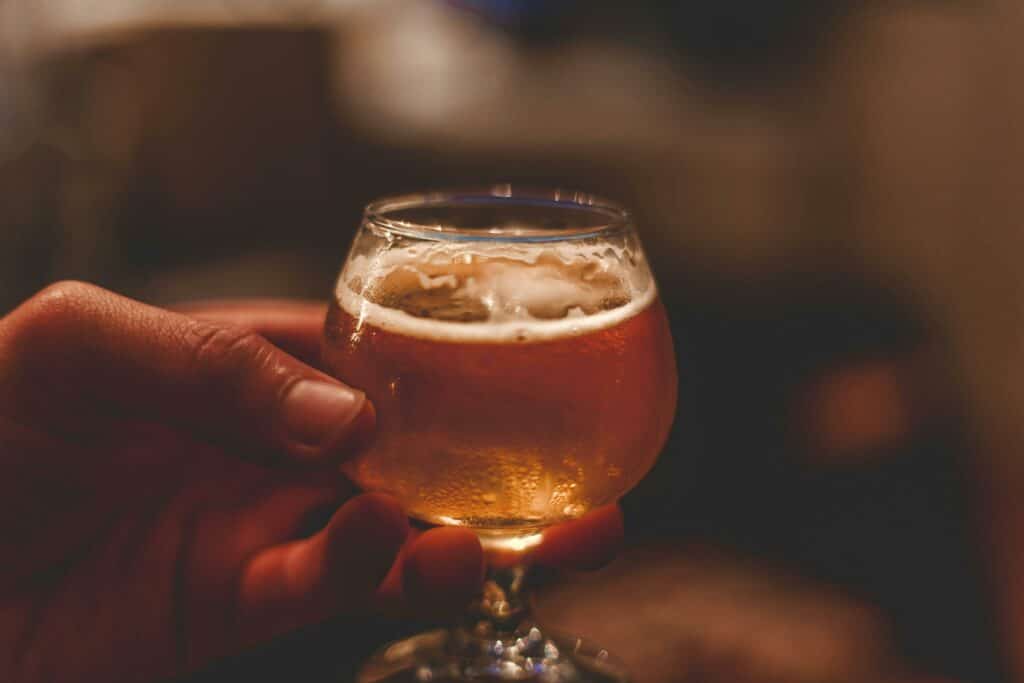
But why take my word for it – I asked Reddit what they thought, so here are a few answers:
“Beer tastes like liquid bread most of the time.”
“Like an angel pissing down my throat.”
“I’ve always thought it tasted like piss.”
Okay, now I remember why I don’t ask Reddit anything. For me, lagers typically have a balanced and smooth flavour with a mild bitterness from the hops and a subtle malt sweetness. But they also taste like bread.
Beer vs Lager
Many people call lager “beer” or beer “lager” interchangeable. So, I have been asked what the difference is.
Beer is a general term encompassing all alcoholic beverages, from fermenting malted grains (primarily barley) to hops, water, and yeast. There are two main types under this broad category: ales and lagers.
So, think of it as Trump supporters. Not all Trump supporters are Nazis, but all Nazis are Trump supporters. This is essentially the same for beers.
Popular Types of Lager and Their Taste Profiles
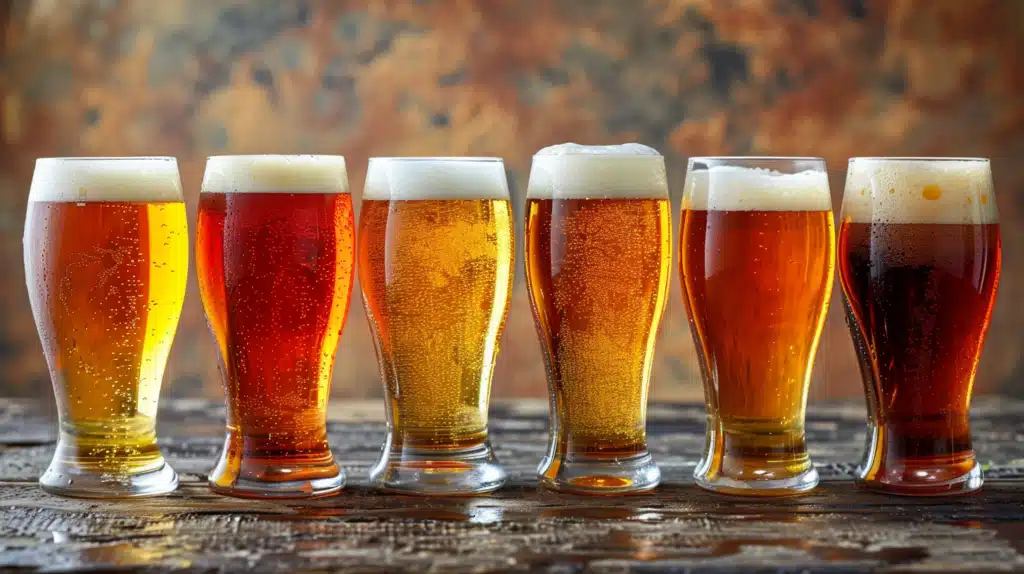
Like Ales, lagers are divided into various styles, each with unique characteristics and flavour profiles. Let’s explore each style, and I’ll throw in a couple of the most popular lagers.
Pale Lagers
These are the most common types of lagers and include popular commercial beers. They typically have a light, crisp taste, balanced malt sweetness, and subtle hop bitterness. Pale lagers are often clear and golden and can taste slightly floral or grassy from the hops.
- Stella Artois 5% (Stella Artois): Stella Artois, originally brewed as a Christmas beer in Leuven, has a full and rich flavour and a crisp, clean taste. It’s made using the original yeast and the renowned Saaz hops.
- Heineken 5% (Heineken Nederland BV): Heineken beer is made of purified water, malted barley, hops, and yeast, including the Heineken A-yeast developed by H. Elion in 1886. It is force-carbonated and popular in the US, Europe, and the Middle East.
Pilsners
Pilsner is a type of pale lager from the Czech Republic. It is known for its golden colour, higher carbonation, and distinctive hop aroma and bitterness. The hops can impart floral, herbal, or spicy notes balanced by a sweet maltiness.
- Summerfest 5% (Sierra Nevada Brewing Co.): Summerfest Pilsner is a refreshing beer with delicate malt and spicy hops. It has hints of lemon zest, a dry finish, and is very sessionable.
- Pilsner Urquell 4.4% (Plzeňský Prazdroj): Pilsner Urquell has a balanced flavour with sweetness from malt and bitterness from hops. You’ll notice a refreshing crispness, subtle caramel tones, and a clean finish in every sip.
Helles
Helles lager is a German-style pale lager that’s maltier and less hoppy than pilsners. It has a smooth, round malt flavour with a soft, dry finish and only a hint of hop bitterness. It is known for its clean, refreshing taste. These lagers are often served at Oktoberfest!
- Weihenstephaner Original 5.1% (Bayerische Staatsbrauerei Weihenstephan): “Original” is a bright yellow lager with a mild hoppy note, a fresh spicy taste, and delicate white foam. It’s brewed according to Weihenstephan’s centuries-old tradition.
- Hofbräu Original 5.1% (Staatliches Hofbräuhaus München): Hofbräu Original is a Munich beer known worldwide for its refreshing, bitter flavour and 5.1% alcohol content.
Dunkels and Schwarzbiers (Dark Lagers)
Dunkels are characterised by their malty sweetness, with caramel, toffee, and bread flavours. Schwarzbiers, or black lagers, are darker and may have a roasted malt flavour that can remind one of coffee or chocolate, yet they remain light and smooth.
- Modelo Negra 5.4% (Grupo Modelo): Modelo Negra Mexican Beer is a lager with German roots, offering a rich taste with a light finish.
- Black Lager 4.9% (Samuel Adams): Dating back to around 800 BC, this dark, roasty beer combines caramel and chocolate malt notes with a bright flavour and crisp finish.
Vienna Lagers
These lagers are amber in colour and offer a balance between malt sweetness and hop bitterness. They often have a toasty or slightly caramel-like malt character with a crisp finish.
- Boston Lager Remastered 5% (Samuel Adams): Boston Lager Remastered is now easier to drink and more refreshing. It has a classic, balanced flavour with hints of caramel, toffee malt, pine, and citrus.
- Dos Equis Ambar 4.7% (Cervecería Cuauhtémoc Moctezuma SA de CV): Dos Equis Ambar (Amber) is a Vienna Lager characterised by its smooth, well-balanced flavour profile.
Bocks
Including traditional bocks, doppelbocks, and maibocks, these lagers are stronger and have a more pronounced malt character. They tend to have a higher alcohol content and a fuller body, with flavours of caramel, toffee, and sometimes dark fruits.
- Ayinger Celebrator 6.7% (Ayinger Privatbrauerei): This beer has a festive foam and a unique fragrance. It tastes mild with coffee tones and lacks the usual sweetness of doppelbock beer.
- Shiner Bock 4.4% (Spoetzl Brewery): Bock has a sweet smell, subtle roasted maltiness, and a slightly sweet taste with roasted nuts and caramel notes.
All Lagers are Created Equal: Premium Lager vs Lager
Finally, have you ever looked at beer labels and wondered why some say ‘premium lager’ while others just say ‘lager’? Is it just a marketing trick, or is there a real difference?
Well, it turns out that ‘premium’ doesn’t mean anything specific in the beer industry. Unlike ‘organic’ or ‘gluten-free’, it’s a fancy way of saying ‘this beer is better than the other stuff we make’, which makes you fork over more hard-earned cash.
That being said, some ‘premium’ lagers have unique characteristics that set them apart. They’re often made with better ingredients like speciality malts and exclusive hop varieties and may be brewed using traditional methods that give them a smoother, more balanced flavour.
But don’t be fooled by the label! Some breweries call their beer ‘premium’ just to make it sound fancier, even if it’s no better than their regular lagers. And just because a beer is low in alcohol doesn’t mean it’s not a premium brew. There are plenty of low-ABV beers out there that taste amazing.
Basically, the difference between premium and regular lager comes down to personal taste. If you want to know for sure, you’ll have to try both and see which one you like better.
Summary
Too long? Lager is a beer type originating from the German word “lagern”, meaning “to store.” It is fermented using cooler temperatures and bottom-fermenting yeast. So, what does lager taste like? It has a clean and crisp flavour. Lager is the most widely consumed beer globally and comes in various varieties ranging from light and crisp to rich and malty. The difference between premium and regular lagers depends on the ingredients, brewing methods, and personal preference rather than a specific standard. So, stop reading, grab yourself a brew, and let me know what your favourite type of lager is!
FAQs
Are Lagers Healthier than Coke?
Lager may be considered healthier than Coke due to its nutritional content (like B vitamins and antioxidants) when consumed in moderation. However, it contains alcohol, which poses health risks if consumed in excess. Conversely, Coke is high in sugar and can contribute to various health issues, but it doesn’t contain alcohol.
Why do some lagers taste skunky?
Lagers taste skunky due to “lightstrike,” a reaction when UV light breaks down hops’ iso-alpha acids, creating a skunk-like compound. This can quickly occur if beer is exposed to sunlight, especially in clear or green bottles. Dark bottles or cans are used to prevent this.
Can lagers be fruity or spicy like some ales?
Lagers can have fruity or spicy notes, typically from the hops or yeast used. However, these flavours are usually subtler than ales due to the cooler fermentation temperatures and different yeast strains. Special ingredients or brewing techniques can also enhance these profiles.
Share Now!
Raise a glass to knowledge! Each article you share pours a little more wisdom into the world, frothing with ideas and bubbling with insights.
